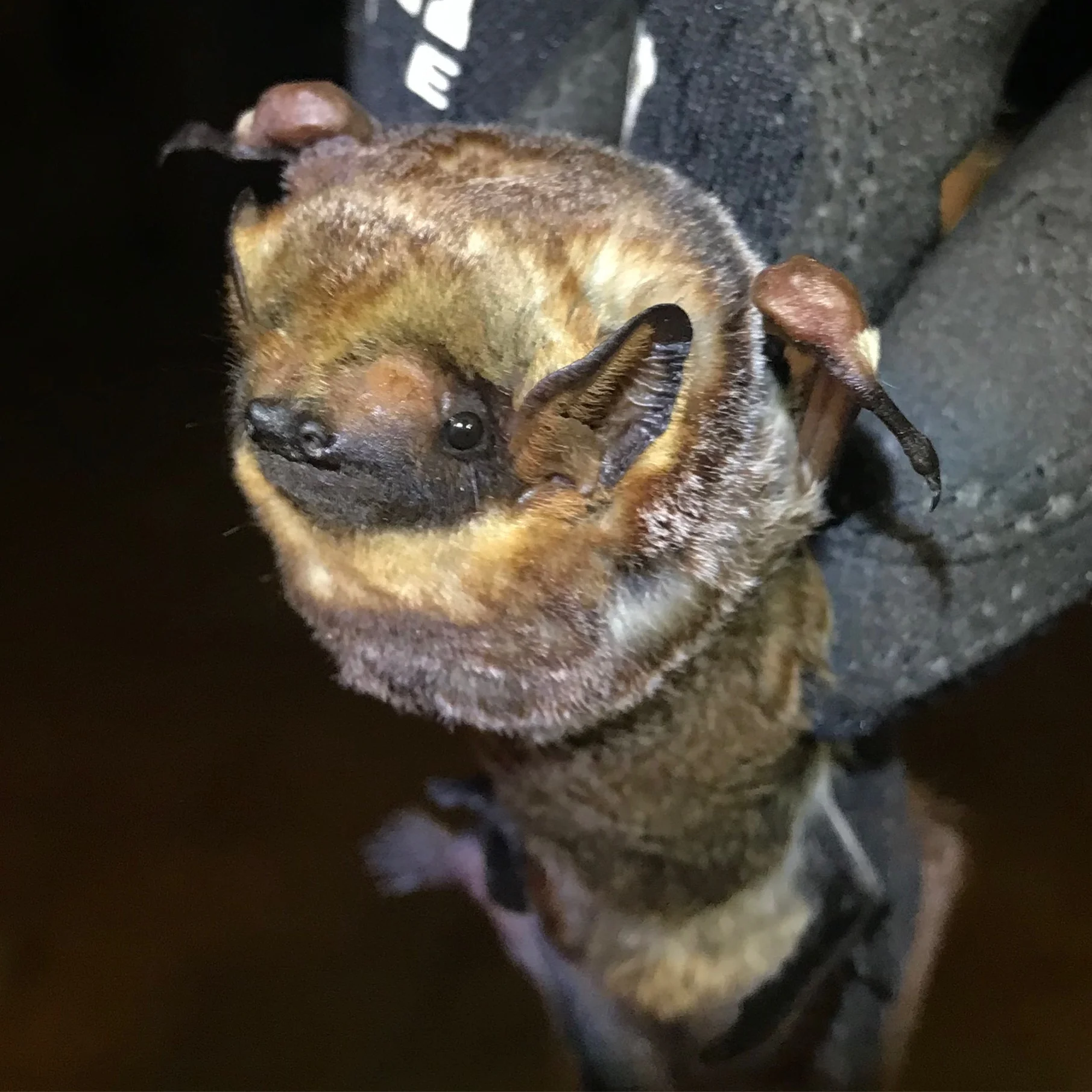Hawaiian Hoary Bat
Lasiurus cinereus semotus
Status: State & Federally endangered in 1970
Weight: 14 to 18 g (0.49 to 0.63 oz)
Wingspan: 10.5-13.5 inches
Population size: Unknown
‘Ōpe‘ape‘a
Hawaii’s only native land mammal

Hawaiian Hoary Bat
Lasiurus cinereus semotus
Status: State & Federally endangered in 1970
Weight: 14 to 18 g (0.49 to 0.63 oz)
Wingspan: 10.5-13.5 inches
Population size: Unknown
Frequently Asked Questions

Nope! ʻŌpeʻapeʻa only eat insects – moths, beetles, termites and others.

None! Hawaii’s bats live in the foliage of trees and don’t sleep in caves or lava tubes.

Photo credit: J. Leon
Yes, but bats in Hawaii won’t use it. ʻŌpeʻapeʻa are solitary; bat houses are for species that form colonies and like to be snuggled in tight with their neighbours.

Lasiurus cinereus cinereius pup (grey) attached to mother’s belly.
Photo credit: B. Baerwald
ʻŌpeʻapeʻa give birth to twins pups once a year in late spring. Mating is promiscuous, and occurs in the autumn. Fertilization is delayed — females store sperm in their reproductive tracts and ovulate in the spring.
Pregnancy: 40-57 days
Lactation: 7 weeks
Fledging: 5 weeks

Young male bat on researchers hand just prior to taking off
Bats first arrived in Hawaii 1.35 million years ago, this was before Big Island had formed.1 No other land mammal has made it to Hawaiʻi without the help of humans.
Migrating mainland hoary bats blown off course by prevailing winds flew 2,200 miles from California. Traveling at 30mph this would have taken 4 days and nights of non-stop flying.2. Genetic studies have found that mainland hoary bats arrived in Hawaiʻi on two separate occasions, thousands of years apart.3

‘ŌPE‘APE‘A
"Half-leaf" because the wing resembles the bottom of a taro leaf, the thick veins in the leaf resemble the bat's fingers.

Hawaiian Hoary Bat
"Hoary" describes the bats’ silver-tipped fur, like hoar frost on trees.

Lasiurus cinereus semotus.
Lasiurus is from the Greek words "lasios" (hairy) and "oura" (tail), because unlike most bats this genus has fur on their tail membranes. Cinereus is from the Latin word "cinis" (ashes), after the ash color of the species fur tips. Semotus is Latin for removed or distant, as this subspecies is located far away from the Mainland species it descended from (Lasiurus cinereus).
The awful stillness of the night that came--
The night that went by and brought forth an offspring...
He is equal to the blowing breeze,
The younger brother of the god
From which sprang the gods of the bats--
The hairy bats. Sprang the bat with many claws--
Sprang the bat and moved away,
That the rising surf might give it birth.
’Tis night.”
- Queen Lili‘uokalani, translation of the ending of the 7th section of the Kumulipo